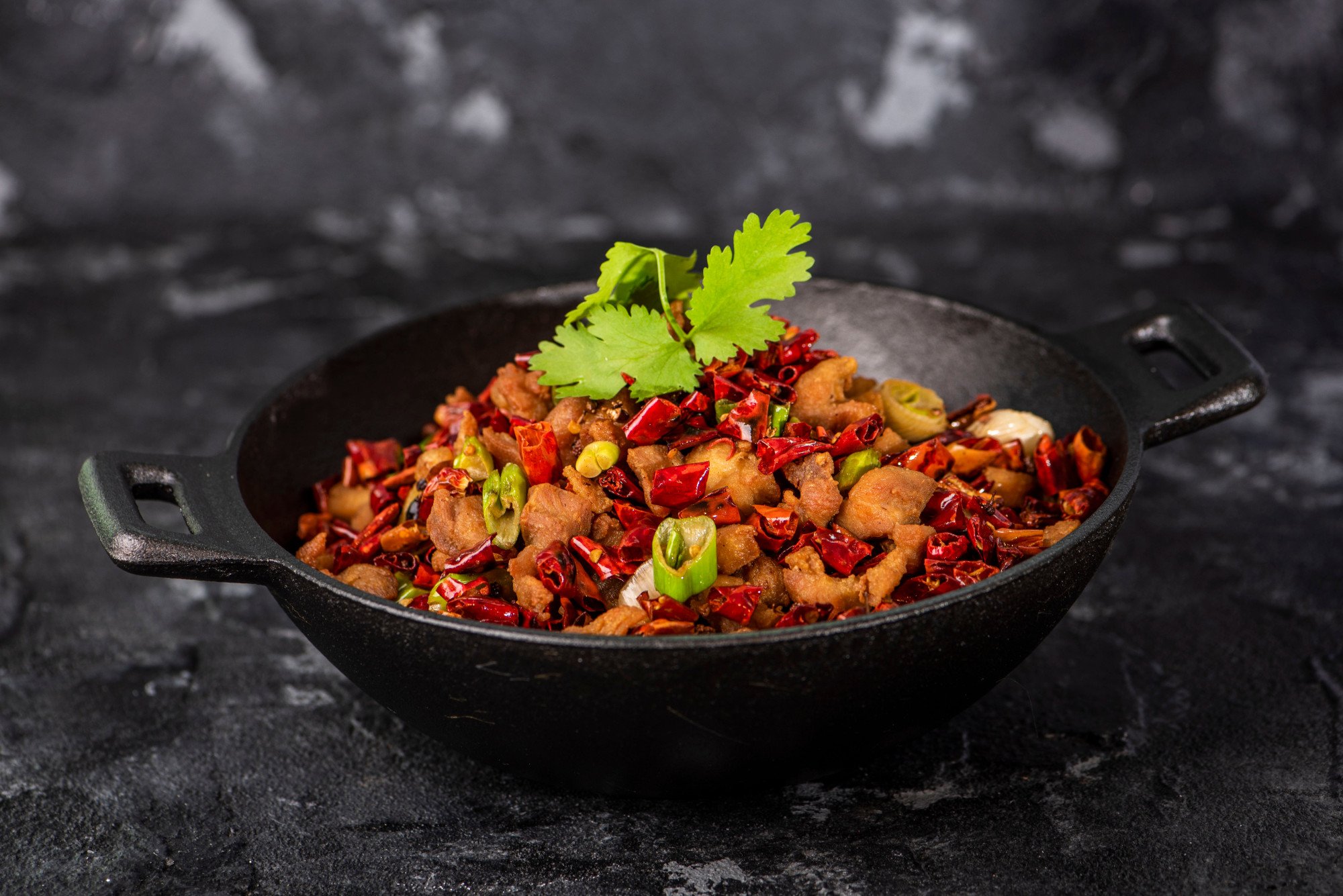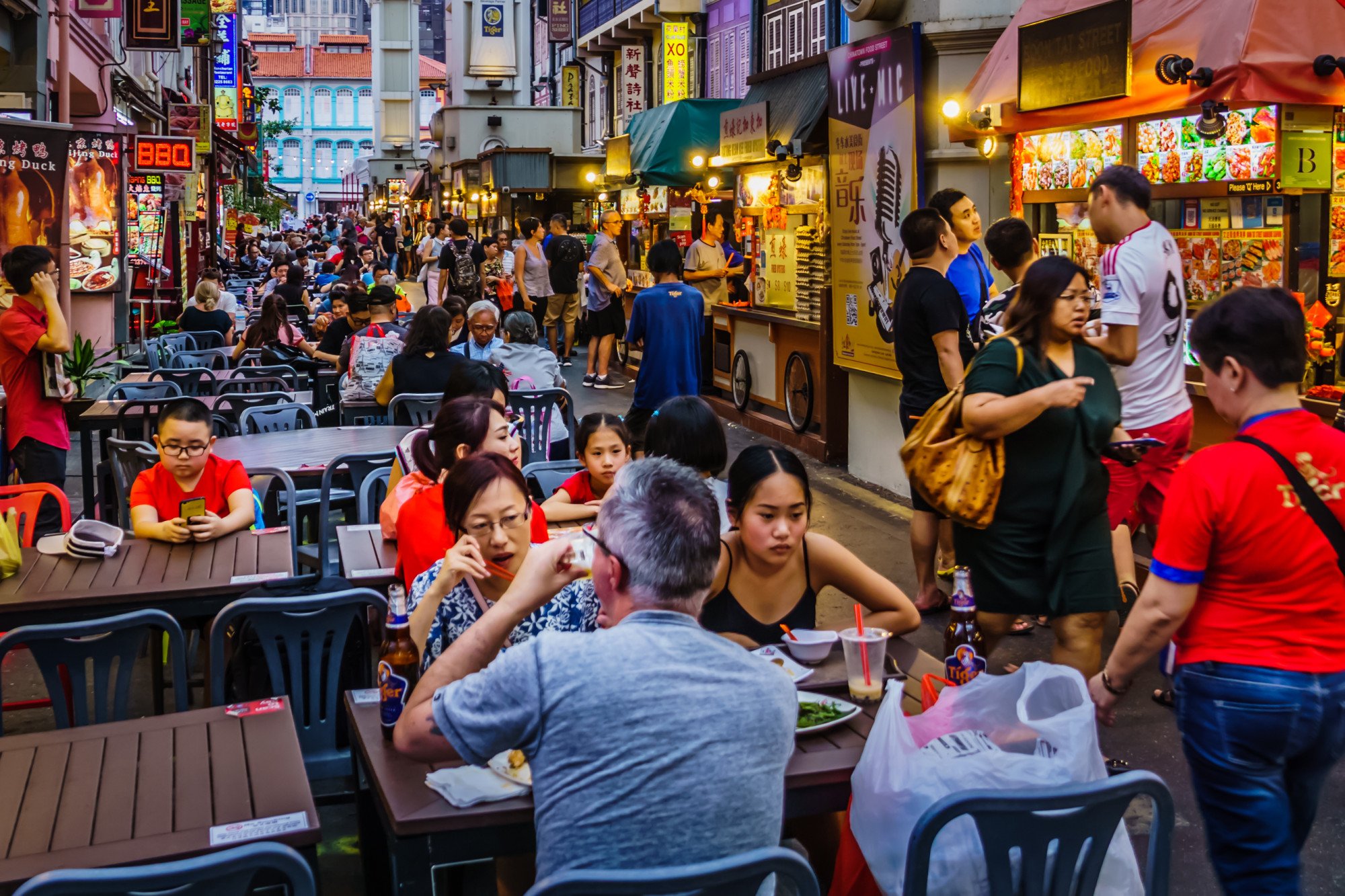Within a sheltered passageway located in one of Singapore The first public housing estates feature a lineup of around 10 well-liked restaurants that draw in both residents and office workers for their midday meals.
Many of these stores showcase primarily Chinese characters with limited English translations, serving items such as biang biang Xi'an-style noodles, stir-fried with spice mala xiang guo and rou jia mo (pork hamburger). Only three stalls sell local food, such as kueh A vibrant rice flour-based dessert paired with roasted meat; both of these stands function solely as takeaway options.
Jeffrey, a 67-year-old retired government employee who spent his childhood in the region and chose not to share his last name, spoke with This Week in Asia about how it had become increasingly difficult to locate some of his beloved regional dishes when contrasted with alternatives like mala xiang guo .
"There are many more Chinese-style cuisines available nowadays, making it difficult to find local favorites such as char kway teow (fried noodles) or hokkien mee (a stir-fried yellow noodle dish) or perhaps a good Singaporean Chinese meal rojak (Fruits and veggies in a sweet-and-savory sauce) or Peranakan pork satay served with peanut sauce and a hint of crushed pineapple," he mentioned.
Chinese restaurants are contributing to an increasing phenomenon where various Chinese culinary and beverage establishments are proliferating across the city-state. These can now be found not just in locations typically visited by Chinese expatriates, such as Orchard Road, Chinatown, and Boat Quay, but also expanding into more locally integrated neighborhoods like Toa Payoh.
This surge has led to concerns among certain locals, who fear it may make it challenging for Singaporean culinary traditions to thrive.

Not long ago, a Reddit user shared their irritation over not being able to travel a kilometer within a particular neighborhood in Singapore without encountering eateries from mainland China, whereas local dishes were less frequently seen. kueh, kway chap (thick noodles served in an herb-infused soup), bak Kut Teh (pork rib broth), and local dishes wanton mee (Dumpling noodles) were becoming increasingly difficult to locate.
"The situation is rather concerning since it appears that we will lose our distinctive local traditional cuisine," posted the user, whose comment received over 1,400 upvotes.
Insights from Momentum Works reveal that over 6,100 stores of Chinese food and beverage brands were established across Southeast Asia last year, marking an increase from the approximately 5,000 outlets in 2023 and just 1,800 in 2022.
The report published in January revealed that Singapore and Malaysia boasted the highest density of Chinese brands such as Haidilao, Tan Yu Grilled Fish, and dessert and beverage franchise Mixue.
Food writer Ryan Kueh informed This Week in Asia that the arrival of various brands indicated China’s exertion of soft power within the city-state, showcasing cultural exports such as Red Note, popular culture, and cuisine impacting neighboring regions.
"Many Singaporeans find mainland Chinese cuisine provides a sense of 'familiar novelty,' particularly from certain regional styles like Sichuan and Hunan cuisines," according to Kueh.
He mentioned that many Chinese food and beverage companies viewed Singapore as an ideal test market before expanding into other Southeast Asian countries. Examples include Luckin Coffee and the milk tea brand Chagee.
Many of these franchises are located in privately owned venues such as food courts, cafes, and malls, where steep rental costs favor the highest bidders—occasionally including Chinese companies—as noted by Kueh. Nonetheless, local favorites persist at state-managed hawkers centers, which receive subsidies aimed at giving priority to Singaporean citizens and permanent residents.

The food writer Wong Chiang Yi contended that the diminishing use of Chinese dialects in Singapore has resulted in confusion about the true nature of Chinese cuisine. According to him, wanton noodles originate from Cantonese cooking, whereas fishball noodles are part of Teochew culinary tradition, specifically hailing from the Chaoshan area in northeastern Guangdong province.
"As dialect cultures have gradually faded away over time, an increasing number of Singaporeans find themselves unable to grasp the roots of these dishes or comprehend the traditional criteria used to evaluate them," he explained.
People in Singapore interviewed by This Week in Asia expressed enthusiasm about the arrival of a fresh influx of Chinese cuisine in their neighborhoods, appreciating the added variety. However, they also recognized that this trend might intensify competition for traditional local meals, given the prevailing desire for those foods to stay budget-friendly.
Depending on the weight and the specific ingredients selected, mala xiang guo In a coffee shop, prices generally tend to be higher compared to those of local dishes like chicken rice, which often range from S$3.35 to S$5 (approximately US$2.50 to US$3.75).
Cara Wong, a 29-year-old journalist, said that if cheap and good local fare could be found in hawker centres, most people would be reluctant to pay more for local food outside these venues.
She mentioned, 'These large Chinese restaurant chains benefit from being perceived as exotic cuisine, which may lead me to pay extra for the experience.' She added, ‘I believe the issue lies in how we appreciate these types of dishes.’

Sociologist Tan Ern Ser posited that popular local eateries typically draw a consistent flow of patrons and thus maintain their success. Nonetheless, upon contrasting these typical local establishments with Chinese chain restaurants, he noted that the chains usually outperformed them across various aspects, which supported their elevated costs.
Tan noted that "the Chinese establishments stand out due to their high standards of quality, encompassing flavor and reliability, along with an effective operational process and a strong focus on customers." He further mentioned that these places frequently provide additional freebies like ice cream, balloons, and toys for kids, making them particularly attractive to families and group outings.
Kueh stated that Singapore's culinary landscape is dynamic and mirrors its changing identity. He explained, “Being exposed to various cultures at their crossroads, both Singapore as a nation and its people embrace this diversity. Regarding food trends, some may be fleeting whereas others endure. The decision on what foods become staples and what turns out to be just a passing trend lies with the Singaporean populace,” Kueh elaborated.
Several of these Mainland Chinese food items could potentially integrate into Singapore’s culinary landscape, becoming part of our distinct gastronomic fabric—think of our localized versions, mala xiang guo and zhajiang mian - much like how Western cuisine such as fish and chips has been modified to suit local preferences and settings.
An instance of regional diversity is seen in A Hot Hideout, established by three students from Nanyang Technological University in 2020. This venture has grown to include seven locations with ambitions to reach twelve sites by year-end. In the previous fiscal year, they reported revenues totaling S$10 million (approximately US$7.5 million).
Lee Ray Sheng, one of the founders of A Hot Hideout, shared with This Week in Asia that in 2020, significant Chinese brands such as Yang Guo Fu and Zhang Liang were still absent from the market. Recognizing this gap, he saw potential to develop a variation of mala tang This approach would appeal to Singaporeans by providing lighter, easier-to-drink soups and employing less oil compared to conventional methods.
Lee mentioned that they added distinctive elements such as scrambled eggs, fried lotus root, and crispy potatoes, while tweaking the spiciness to achieve better balance and taste appeal. This led to the creation of their 'new generation mala,' which embodies a contemporary, local, and welcoming identity.
He noted that Sichuan cuisine has gained popularity in Singapore, with Chinese brands contributing significantly to this shift. According to him, these dishes often attract younger audiences due to their intense flavors, strong marketing strategies, and viral presence on social media—elements that have redirected consumers' interest away from conventional options towards more fashionable dining experiences.
In spite of this, we feel that both regional and global dishes can thrive together. The focus should be on changing tastes and styles rather than competing with each other.
More Articles from SCMP
Analyst warns China’s foreign holdings endangered amid escalating trade conflict
Indonesia's Prabowo States That Violence in Gaza Highlights the Collapse of the World's Rules-Based Order
The Hong Kong courts have invalidated the will of the late magnate Lim Por-yen.
An Australian judge has resigned from Hong Kong's highest court, becoming the sixth individual to do so this year.
The article initially appeared on the South China Morning Post (www.scmp.com), which is the premier source for news coverage of China and Asia.
Copyright © 2025. South ChinaMorning Post Publishers Ltd. All rights reserved.

Out Of Topic Show Konversi KodeHide Konversi Kode Show EmoticonHide Emoticon